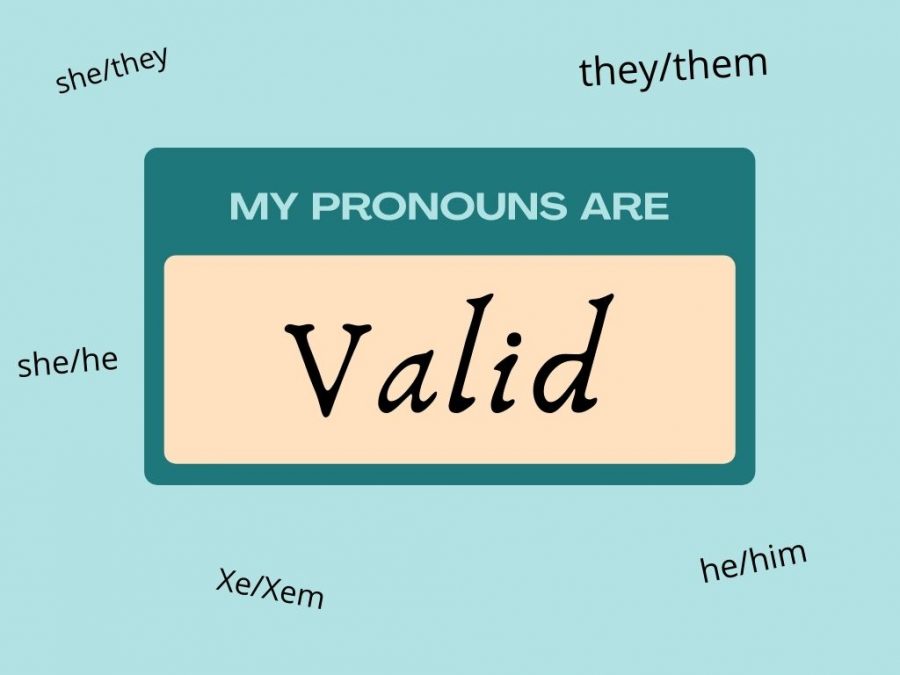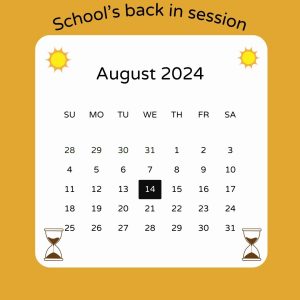Opinion: Pronouns: A how to guide
Written here are just some of the many pronouns and pronoun groupings an individual may have. Graphic by: Olive Kranzler
November 18, 2021
Gender diverse students are validated when referred to by their proper pronouns; here is how students and staff can help.
Although the pronouns section on a user’s Instagram bio is new as of May 13 the concept of having “they/them,” multiple or preferred pronouns has been around for way longer. It isn’t some trend that people are hopping on, an individual’s identity should never be questioned by anyone but themselves. With that being said, there are some aspects of society that make it difficult for non-gender conforming people to exist and feel comfortable, people assuming other people’s gender is one of them.
When looking at an individual, it is hard to not automatically put them into one of two categories… male or female. This is the hurdle that gender divergent people face on a daily basis. Whether it be not being able to use the public restrooms, being misgendered or undergoing dysphoria with their body and what it means about their gender. Society urges people to pick a gender, not always intentionally, but life is easier when everyone is categorized.
Even though steps are being taken to recognize non-gender conforming individuals, pressure is still being put on them to be able to “pass” as trans in order to be validated. Mae Stepan (they/he), a junior, said, “I feel like I’m a good example of [the difference between gender and gender expression]. I identify as trans-masculine and would prefer to be seen as a guy. But a lot of the time that’s not possible for me, and yet putting on a skirt and makeup is fun and makes me feel pretty. That doesn’t always take away from my identity or how I feel internally, and it doesn’t make my existence any less valid.”
Societal perceptions of gender are often fueled by indicators such as clothing as well as other aspects, such as interests and mannerisms. Gender expressions are the choices that people make and how they express themselves. It is not always directly affected by a person’s gender. Gender is how an individual identifies and can be validated when they are referred to by the proper pronouns. How can individuals distinguish between the two to avoid misgendering?

“At this point in my life, I have a lot of trans friends so I’ve gotten used to defaulting to “they/them” before I know someone’s pronouns, but I know that can be difficult for people who aren’t around a lot of trans people. Whenever I misgender someone, I quickly correct myself and move on, as this is what I’d want someone to do for me. Most people don’t want to draw much attention to the fact that they have been misgendered, so a quick ‘sorry’ and a correction is the best thing to do in my opinion,” said Stepan.
Another struggle gender diverse students face is the aspect of bringing their gender up with their teachers. Due to the nature of school, a student is referred to often by their teacher, which could potentially be a source of major anxiety for students when they are misgendered. “Students should never hesitate to come talk to their teacher when needed, and teachers should also reach out to their students to make sure they are using the right pronouns. Mutual respect is a core value in life and in education,” said Olivier Cougard, the VHS French teacher.
Staff can also make an effort to validate students. “I think as a teacher, one of your priorities is to know your students and know who they are. It is a matter of respect to use or try to use the right pronoun for students. That doesn’t mean that teachers won’t make any mistakes, I do too, but I think it is important that students know that we respect and embrace them in their diversity,” said Cougard. “We had a training/conference about inclusivity before the beginning of the school year and I think that’s a good start and a good initiative. Then, it is important to put these things into practice in your classroom. It is important to talk about inclusivity together with your students. I think communication between teachers and students is a key factor here. Some students don’t want to have their pronoun choice disclosed publicly or share their pronouns with their family. As teachers, it is important to respect these choices and make sure we become day after day a more inclusive school. To do so, we need to listen and take into account our students’ opinions and suggestions.”
“I think the school does a great job acknowledging the LGBTQ+ community. I can’t speak for everyone but the teachers and staff have been respectful of my identity,” said Stepan. In regards to how other students can help, Stepan asks people to “Try to be aware of your classmate’s pronouns. Being misgendered in front of an entire class is an extremely uncomfortable experience and it has happened to me quite a bit this year.”
Overall, the best thing to do if someone’s pronouns are unclear is to ask them. This way you can avoid misgendering them, and they can feel more comfortable. It should also be noted that sharing pronouns during introductions is another way to avoid the awkwardness of misgendering and should be implemented into society and school activities. Asking someone’s pronouns shouldnt be awkward, in fact, they are more than likely to be thankful if you do.








![Lindsay Guzik, new assistant principal said, "I am settling in [at VHS] pretty well. I know a lot of the students, so that makes it a little bit easier coming from Cabrillo, and it's been nice to see them all grown up." Photo by: Abraham Kassa](https://thecougarpress.org/wp-content/uploads/2025/09/IMG_9728-300x200.jpg)

amelia • Dec 8, 2021 at 8:10 pm
great article! really well written. i totally agree! <3